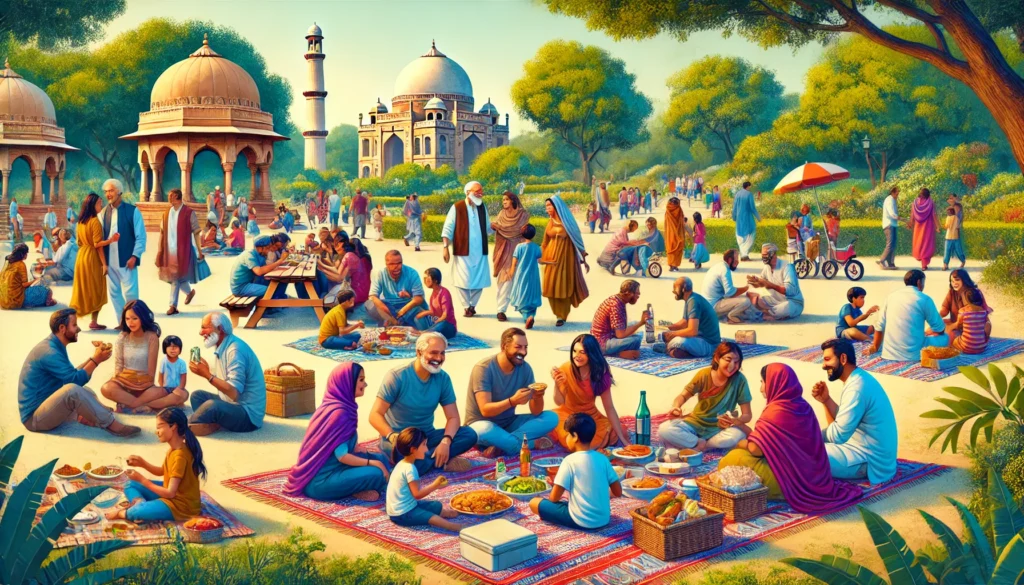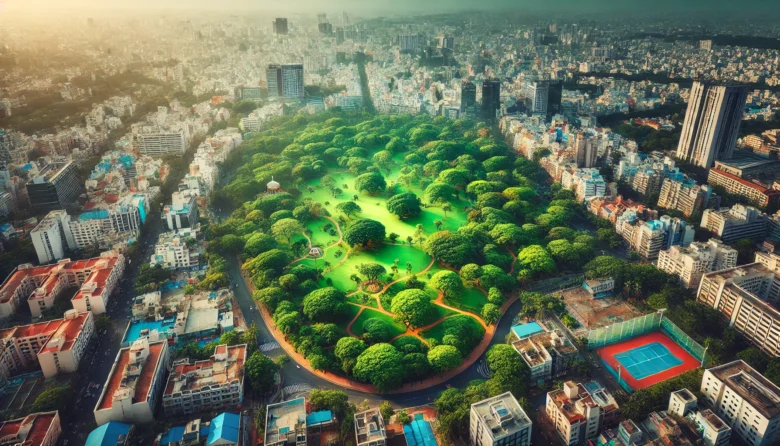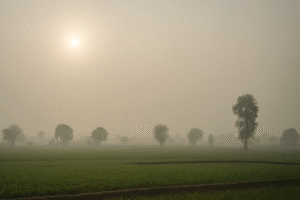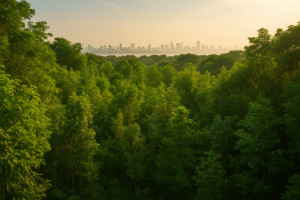Green spaces in urban areas are not merely patches of greenery; they are integral to our social framework. These spaces offer numerous benefits, from enhancing mental well-being to fostering community bonds. In a bustling country like India, where cities are rapidly expanding, understanding the sociology of green spaces becomes essential. Let’s explore why these urban oases are vital and how they shape our lives.
Introduction
Imagine living in a city without parks, gardens, or green spaces. It would feel stifling, wouldn’t it? Green spaces in urban areas are not just a luxury but a necessity. They provide a respite from the concrete jungle, offer recreational opportunities, and play a crucial role in social interactions. In this blog, we’ll delve into the sociology of green spaces in urban areas and understand their significance, especially in the context of India.
The Importance of Green Spaces
1. Mental and Physical Health
Green spaces are known to improve both mental and physical health. They offer a place for exercise, relaxation, and socialization. Studies have shown that spending time in nature reduces stress, anxiety, and depression. In the bustling environment of urban India, green spaces offer a crucial retreat from the daily hustle and bustle.
Case Study: Cubbon Park, Bangalore
Cubbon Park in Bangalore is a prime example of how green spaces can enhance the quality of life in urban areas. This sprawling park provides a peaceful retreat for the city’s residents, offering jogging tracks, yoga sessions, and open spaces for families to picnic. It’s a vital green lung for the bustling city, promoting physical and mental well-being.
2. Social Cohesion
Green spaces significantly contribute to social bonding and community interaction. They serve as communal areas where people from different backgrounds can interact, share experiences, and build relationships. In a diverse country like India, green spaces act as melting pots, bringing together people from various cultures and communities.
Case Study: Lodhi Garden, Delhi
Lodhi Garden in Delhi is more than just a historical site; it’s a social hub. On any given day, you can find people from all walks of life enjoying the gardens, participating in group activities, or simply relaxing. This communal space helps bridge social gaps and promotes inclusivity.

3. Environmental Benefits
Urban green spaces contribute to the environment by reducing air pollution, lowering temperatures, and supporting biodiversity. Trees and plants capture carbon dioxide and emit oxygen, enhancing air quality and making it healthier to breathe. In highly polluted cities like Delhi and Mumbai, green spaces are crucial for better air quality.
4. Economic Value
Green spaces can also have significant economic benefits. They boost property values, draw tourists, and lower healthcare costs by encouraging a healthier lifestyle. Cities that invest in green infrastructure often see a return on investment through increased economic activity and improved public health.
Challenges in Maintaining Urban Green Spaces
Despite their benefits, maintaining green spaces in urban areas comes with challenges:
1. Urbanization and Land Scarcity
As cities expand, green spaces are often the first to be sacrificed for development. This results in a loss of essential recreational and social areas. Balancing urban growth with the preservation of green spaces is a significant challenge for city planners.
2. Funding and Maintenance
Maintaining green spaces requires funding and resources. Many municipal budgets are stretched thin, and green spaces often need more priority. Ensuring regular maintenance and care of these areas is crucial for their sustainability.
3. Public Awareness and Participation
Public participation in maintaining green spaces is essential. Often, people need to be made aware of the importance of these areas and how they can contribute to their upkeep. Community involvement and education are key to successfully managing urban green spaces.
Solutions and Strategies
To overcome these challenges, we need innovative solutions and collaborative efforts:
1. Integrated Urban Planning
Urban planning should integrate green spaces into the city’s infrastructure. This means prioritizing parks, gardens, and recreational areas in development plans. Policies should be in place to protect existing green spaces and create new ones.
2. Public-Private Partnerships
The government and private sector collaboration can provide the necessary funding and resources for maintaining green spaces. Companies can adopt parks or sponsor green initiatives, ensuring their sustainability.
https://www.youtube.com/watch?v=c9T0KGDS0x0&pp=ygUkVGhlIFZpdGFsIFJvbGUgb2YgVXJiYW4gR3JlZW4gU3BhY2Vz
3. Community Involvement
Encouraging community involvement is crucial. Residents can participate in maintaining green spaces through volunteering, donations, or simply by using and respecting these areas. Awareness campaigns help inform the public about the advantages of green spaces and how they can get involved in maintaining them.
4. Innovative Green Solutions
Innovative solutions like rooftop gardens, vertical forests, and urban farming can create green spaces in areas with limited land. These initiatives add greenery to urban environments and promote sustainable practices.
Conclusion
The sociology of green spaces in urban areas is a testament to their multifaceted benefits. These urban green areas are indispensable for enhancing mental and physical health, fostering community bonds, and providing environmental and economic benefits. In a rapidly urbanizing India, it is essential to prioritize and protect our green spaces for a sustainable and harmonious future.
Author’s Note
Thank you for joining me to explore the sociology of urban green spaces. This blog has highlighted the importance of these spaces and inspired you to appreciate and protect them. Let’s work together to ensure our cities remain vibrant and green. If you have any thoughts or questions, please share them in the comments below.
G.C., Ecosociosphere contributor.





Comments
I do not even know how I ended up here but I thought this post was great I do not know who you are but certainly youre going to a famous blogger if you are not already Cheers
Can I just say what a reduction to seek out someone who truly is aware of what theyre speaking about on the internet. You undoubtedly know the best way to convey a difficulty to gentle and make it important. Extra people need to learn this and understand this facet of the story. I cant believe youre no more in style since you positively have the gift.
Thank you for writing this post!
The other day, while I was at work, my cousin stole my iphone and tested to see if it can survive a 25 foot drop, just so she can be a youtube sensation. My iPad is now broken and she has 83 views. I know this is completely off topic but I had to share it with someone!